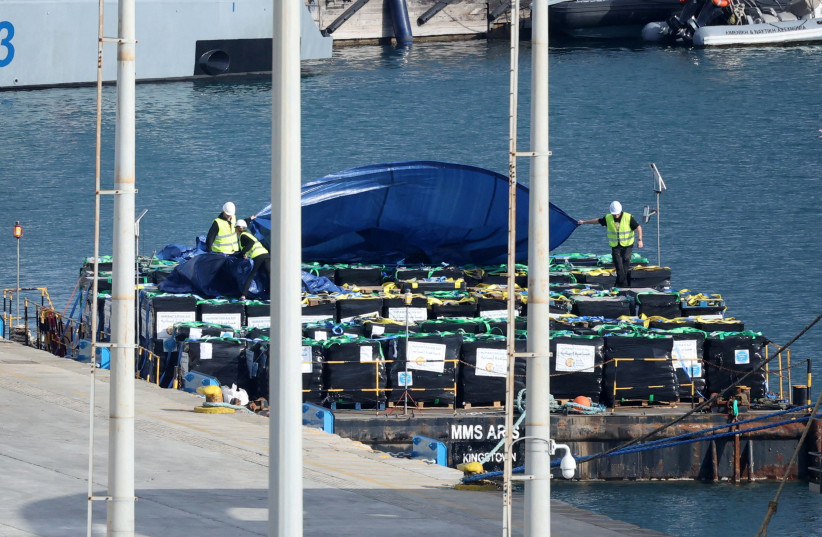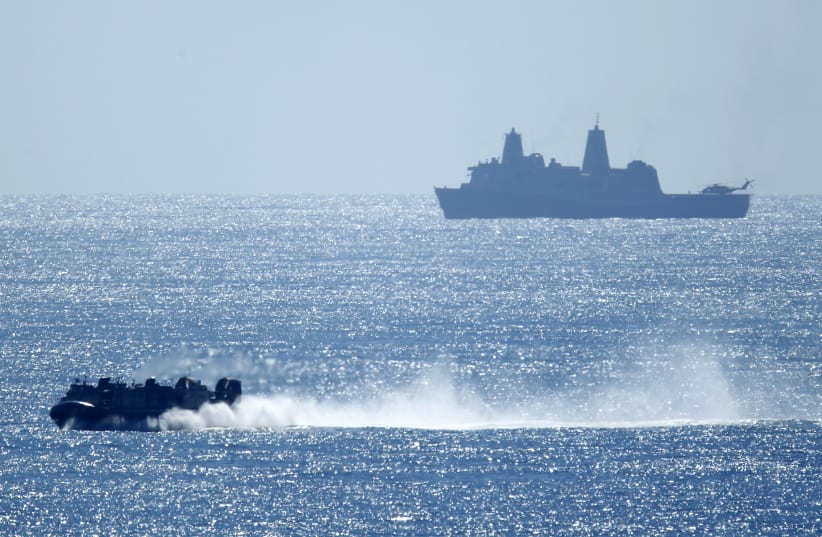Several small landing craft ships departed the US this week for the long, slow, trip across the Atlantic to eventually reach their destination off the coast of Gaza. According to USNI, “four Army watercraft left the pier at Fort Eustis, Va., sailing down the James River, to the Chesapeake Bay and the open Atlantic.”
The ships that are on the way now include the USAV James A. Loux, USAV Montorrey, USAV Matamoros, and the USAV Wilson Wharf. “On Sunday, USAV General Frank S. Besson Jr. (LSV-1) left the pier at Fort Eustis and more Army vessels are set to join the five that departed this week,” USNI reported. These ships are part of the US Army’s 7th Transportation Brigade of the 18th Airborne Corps. Hundreds of soldiers will accompany them. US Army Brig.-Gen. Brad Hinson, the assistant commanding general for support of the 18th Airborne Corps, spoke to reporters about the mission this week.
Ships to make slow journey to Gaza
The ships departed on Tuesday and will make a slow 11 knots across the ocean, taking weeks to cross the Atlantic and then cross the Mediterranean. One of the ships, the Wilson Wharf, had its name changed last year. According to the US Army, the name changes reflect a decision by Congress to remove names linked to the Confederacy. Wilson’s Wharf had been called the USAV Chickahominy. This battle, also known as Gaines’ Mill, took place in 1862 and was part of the Seven Days Battles of the Civil War.


The ship was renamed for a Union victory at Wilson’s Wharf in 1864. According to a report from the US Combined Arms Support Command in September 2023 “on May 24, 1864, Confederate Maj.-Gen. Fitzhugh Lee’s cavalry division (about 3,000 men) attacked the Union supply depot at Wilson’s Wharf, on the James River in eastern Charles City, Virginia. The division was repulsed by two African American regiments of the United States Colored Troops under the command of Brig. Gen. Edward A. Wild (about 1,800 men), who were in the process of constructing a fortification, which was subsequently named Fort Pocahontas.”
The other ships also have names taken from US history. The Matamoros refers to an 1847 battle in Mexico during the Mexican-American war. The USAV Montorrey is also named for a battle during the same war. The James A. Loux is named for a soldier who “distinguished himself while engaged in military operations involving conflict with an armed hostile force in the Republic of Vietnam,” according to Navsource, a website that covers naval history. Loux was part of the 458th River Patrol Boat Company during a battle in 1971 in which he was killed in Vietnam.
Three of the ships heading to Israel are from the Runnymede class of what are known as large landing craft. Thirty-five were constructed since 1990. They are 174 feet long and have a crew of 13. They can transport a variety of cargo. By contrast, the James Loux is longer at 273 feet and is part of a different class of ship called the General Frank Besson class of support vessel. It has bow and stern ramps and it can be beached to deliver cargo. It can transport up to 15 tanks. It can carry almost three times what the landing craft can carry. Only eight of the Frank Besson class ships have been built.
US Central Command said on March 12 that the Loux, Monterrey, Matamoros, and Wilson’s Wharf “from the 7th Transportation Brigade (Expeditionary), 3rd Expeditionary Sustainment Command, XVIII Airborne Corps, departed Joint Base Langley-Eustis en route to the Eastern Mediterranean to establish a roll-on, roll-off dock capability that allows the ship to shore humanitarian assistance to Gaza. SP4 James A. Loux, Monterrey, Matamoros, and Wilson Warf are carrying equipment and supplies needed to establish a temporary pier to deliver vital humanitarian supplies.”
The James Loux has taken part in operations in the region in the past. In 2020 it took part in Native Fury 20, a drill in the UAE. By contrast, the Matamoros took part in a 2020 operation to support transportation of vehicles from an amphibious landing dock ship based near Guantanamo Bay in Cuba during humanitarian relief in Haiti. In 2020 the Wilson’s Wharf, under its former name of Chickahominy, played a role in UNITAS LXI, a drill in Ecuador that brought together forces from nine countries to focus on training together.
These ships are well placed for the operation ahead off the coast of Gaza. This is a unique operation. It is also a unique opportunity to bring these capabilities together for a real-world crisis, after many years of drills.
